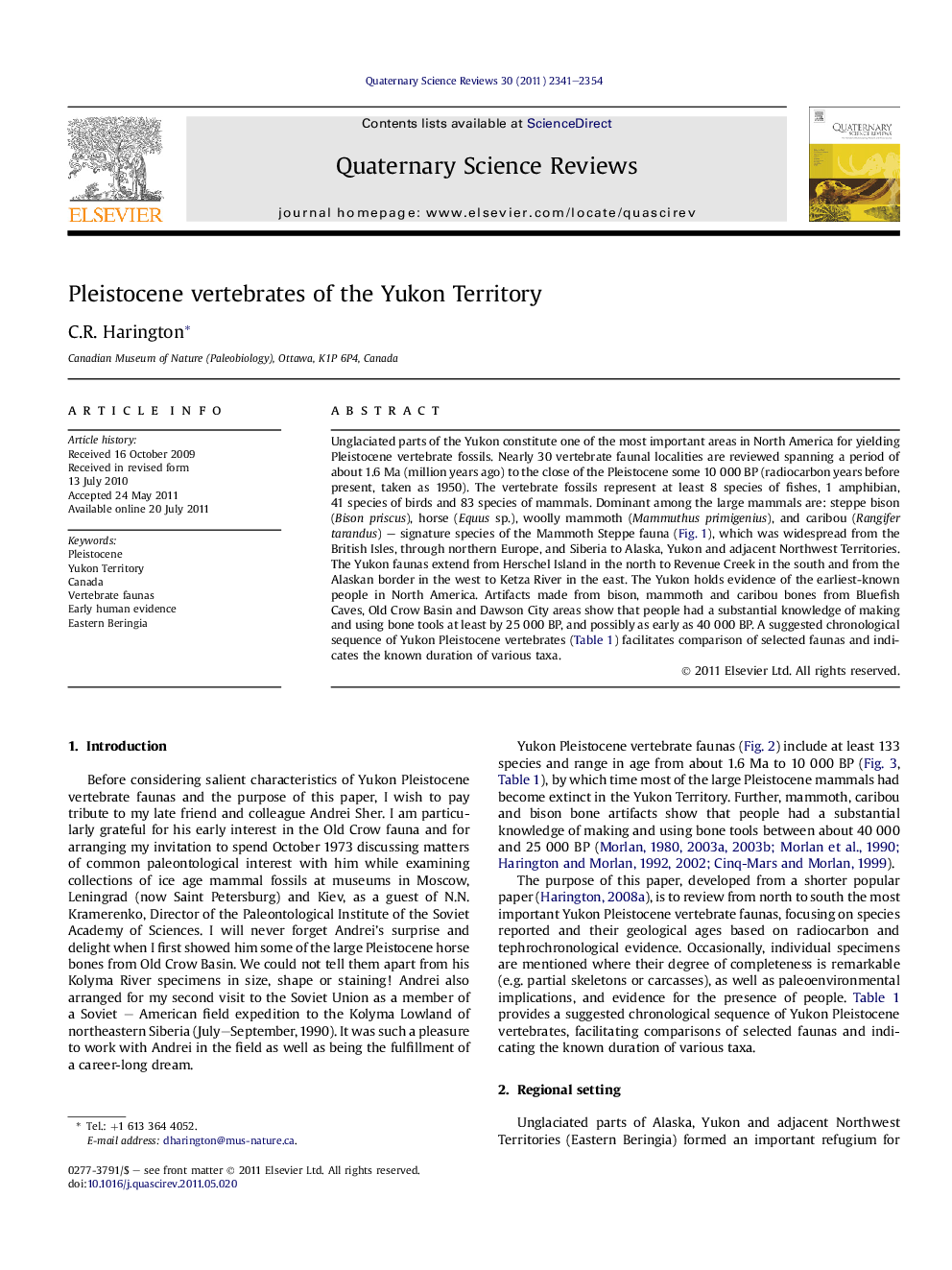| Article ID | Journal | Published Year | Pages | File Type |
|---|---|---|---|---|
| 4735879 | Quaternary Science Reviews | 2011 | 14 Pages |
Unglaciated parts of the Yukon constitute one of the most important areas in North America for yielding Pleistocene vertebrate fossils. Nearly 30 vertebrate faunal localities are reviewed spanning a period of about 1.6 Ma (million years ago) to the close of the Pleistocene some 10 000 BP (radiocarbon years before present, taken as 1950). The vertebrate fossils represent at least 8 species of fishes, 1 amphibian, 41 species of birds and 83 species of mammals. Dominant among the large mammals are: steppe bison (Bison priscus), horse (Equus sp.), woolly mammoth (Mammuthus primigenius), and caribou (Rangifer tarandus) – signature species of the Mammoth Steppe fauna ( Fig. 1), which was widespread from the British Isles, through northern Europe, and Siberia to Alaska, Yukon and adjacent Northwest Territories. The Yukon faunas extend from Herschel Island in the north to Revenue Creek in the south and from the Alaskan border in the west to Ketza River in the east. The Yukon holds evidence of the earliest-known people in North America. Artifacts made from bison, mammoth and caribou bones from Bluefish Caves, Old Crow Basin and Dawson City areas show that people had a substantial knowledge of making and using bone tools at least by 25 000 BP, and possibly as early as 40 000 BP. A suggested chronological sequence of Yukon Pleistocene vertebrates (Table 1) facilitates comparison of selected faunas and indicates the known duration of various taxa.
